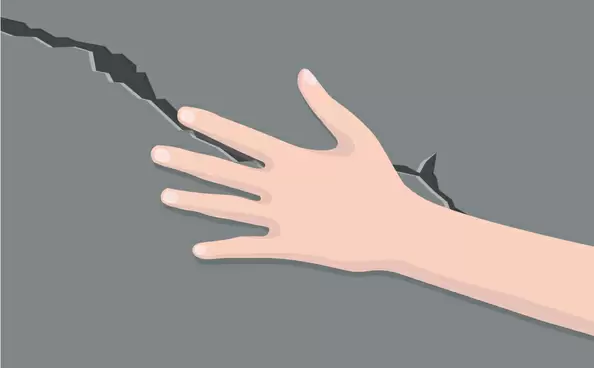
31.05 2022
Not all cracks are the same.
The type, size and location of the cracks are important to consider when determining the cause of the problem, as well as for the correct direction in the search for a solution to the problem.
Likewise, assessing the success of a restoration project is based on a combination of immediate and delayed advantages, disadvantages, and risks.
Different types of cracks on the walls:
The most common types of cracks in walls are:
If cracks in the walls suddenly appeared in your home (not to be confused with your sudden discovery, because you may have simply not paid attention for a long time), then they may be a symptom of a deeper structural problem .
Smaller hairline cracks are quite common in walls and usually do not cause concern for property owners. Larger cracks that start at windows, doorways, or building corners may indicate that the building’s foundation has failed, sagged, or lost its strength, causing all or part of the building to subside.
Note whether the crack is open or unopened, horizontal or vertical, zig-zag, stepped (such as in brickwork), or follows joint lines at joints. If the crack is 5 mm or wider in at least one place along its entire path, or you notice a complete separation in the construction of the unit (in the mortar or cement between the bricks), then it is recommended to seek professional advice. In other cases, you should not leave signs of destruction without attention, and in any situation, draw up a monitoring plan and conduct an inspection of the structure at least once a month, recording the state of the structure at the time of the inspection.
Once the root cause has been determined to be subsidence or reduced bearing capacity, several solutions must always be considered. This list includes traditional strengthening methods or a non-invasive method of injections, which is the most operative and simplified with a more cost-effective result.
GeoResin resin injections are designed to be applied locally in precisely defined areas of subsidence and weakness of the base under the structure. Using a process similar to surgery, the method increases the bearing capacity of the soil and aligns the building with high precision. Whether the cracks on the walls will be completely closed depends on the direction of the crack and the condition of the foundation under your house. That is, the main question is whether the structure can absorb the leveling force? In the vast majority of cases, houses and structures can be leveled within a day using GeoResin technologies, and the process itself is tightly controlled at all times using laser levels to ensure accuracy.
In everyday life, in addition to professional beacons, a special indicator is used to monitor the behavior of structures – a tape that is attached to significant cracks in the wall. This visual indicator is one of many measurement methods that technicians use to closely monitor changes throughout a controlled recovery or surveillance process. Even to the untrained eye, it is quite possible to detect a visible change or distortion of the tape due to movement or deformation of parts of the structure on which it has been applied. The tape can also show how the structure moves in response to the restoration of the foundation level, including the direction and degree of uplift.
However, it should be understood that the tape is very sensitive to external environmental conditions. Moisture, external influences, and temperature changes can damage fasteners and distort objective information. To achieve the best long-term results after carrying out restoration work, GeoResin recommends organizing geodetic monitoring of the building’s condition and regular inspection of nodes and structures.
